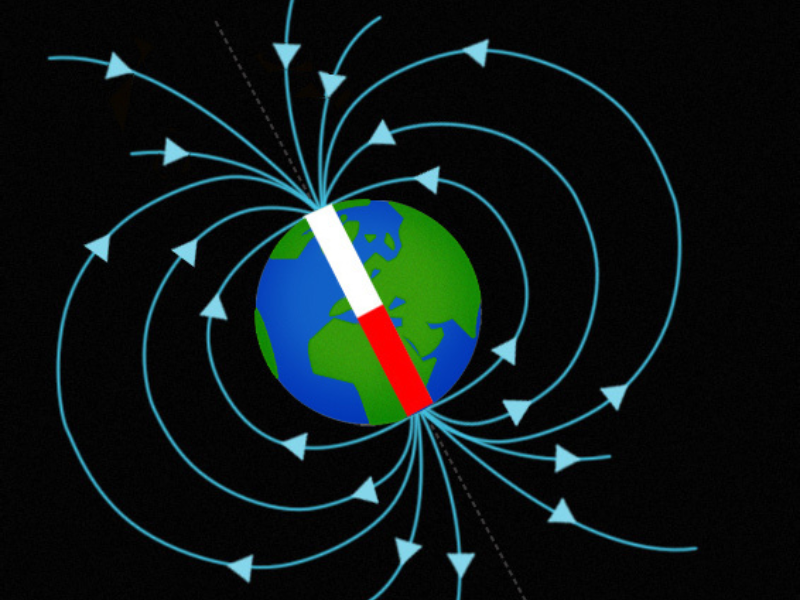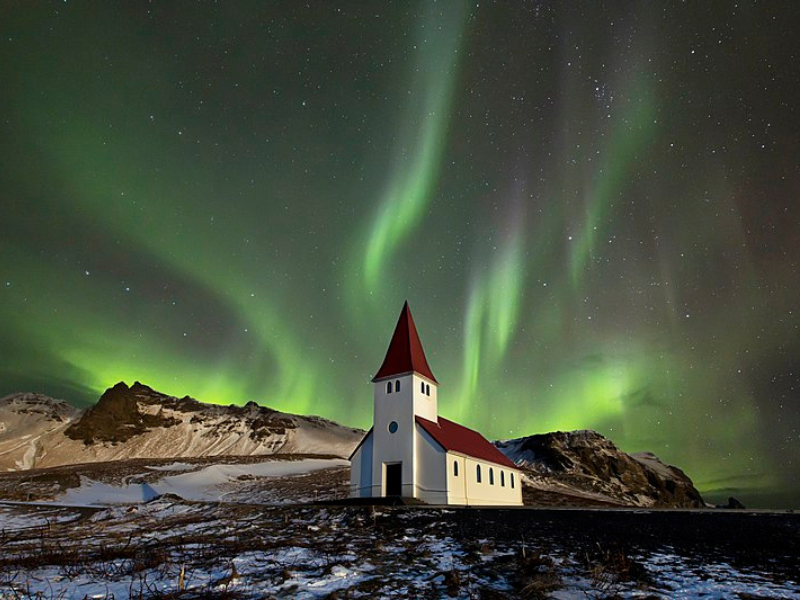Why Did We Get to See the Northern Lights in Montréal?
They splash the night sky with flickering ribbons of colours, light up our eyes, and amaze our minds. The aurora borealis are, undoubtedly, one of the most striking things we see in the sky. Except, we tend to think of them as the exclusive domain on the North and South poles — never really imagining that they could happen in places like Montréal. Yet in 2024 this is exactly what happened. How come? Will there be more? The Montréal Science Centre’s team decided to look into it, and here’s what they found out!
What’s an Aurora?
Let’s get our terminology straight first. Often called the northern lights, this phenomenon is called aurora borealis when it happens in the Northern Hemisphere. When it happens in the Southern Hemisphere, it is called aurora australis, or southern lights.
Auroras happen when solar particles enter the Earth’s upper atmosphere at incredible speeds… up to 72 million kilometres per hour in fact! By interacting with the planet’s magnetic field, these particles create dynamic ribbons of colours in the sky, green being the colour we most often see.

The Earth’s magnetic field is part of the reason why auroras are almost never seen beyond the uppermost (or lowermost) latitudes of the planet (way up north, or way down south). When those charged particles reach Earth, the planet’s magnetic field reroutes them to the magnetic poles located (yep, you guessed it!) near the geographical North and South Poles, in the Arctic and in Antarctica. The areas on Earth where the auroras are most often seen are known as the “auroral zones.”
Extraordinary Solar Activity
So, why we were able to see aurora borealis in such unusual places, like Montréal, between May 10 and 12 this year? Every 11 years or so, the Sun’s activity cycle hits a peak, and this means a much higher number of sunspots. A sunspot is a place on the Sun where the magnetic activity is very intense and where impressive solar flares happen.
When solar activity nears its peak, the Earth’s auroral zones get bigger. So big, in fact, that they stretch to places closer to the equator. This is what’s happening this year, in 2024.
In fact, the northern lights we saw between May 10 and 12 this year happened because of the biggest geomagnetic storm the Earth has seen over the last 20 years! The reason for this storm? An immense sunspot.

Did you know? If you have solar eclipse glasses (like the ones we handed out for the total solar eclipse on April 8 this year), you can use them to look at the Sun and try to find sun spots!
When Can We See the Northern Lights Again?
Predicting exactly when a solar eclipse will happen is easy enough, but auroras are much more unpredictable. They are extremely difficult to predict, even a few days in advance. Most of the time, predictions can only be made the same day. Yet, sometimes, certain things line up just right and increase the chances of seeing auroras. This week is one of those times! Two celestial events are likely work together and maybe, just maybe, offer us a chance to see the northern lights again here in Montréal.
Between June 4 and 6, Earth will once again be face to face with the gigantic sunspot responsible for the aurora we saw between May 10 and 12. This is because the Sun had made a full rotation since then. With a little luck, this sunspot will emit solar flares which will expand the auroral zone to include Montréal. The second celestial event working in our favour will be the new moon on June 6. The night sky is much darker during a new moon, perfect for observing celestial events! The only thing to watch out for is cloud cover, which can change from one place to the next and obstruct our view of the night sky.

There’s no way to be sure that we’ll see the northern lights again but keep your eyes open! Check the weather forecast and follow the astronomical forecast too! Identify the best possible night to watch the night sky and try to get far away from the city lights. Then point your eyes to the north! And even if you don’t happen to see the aurora borealis, well, you’ll still get to admire the stars, and that’s pretty great too.
